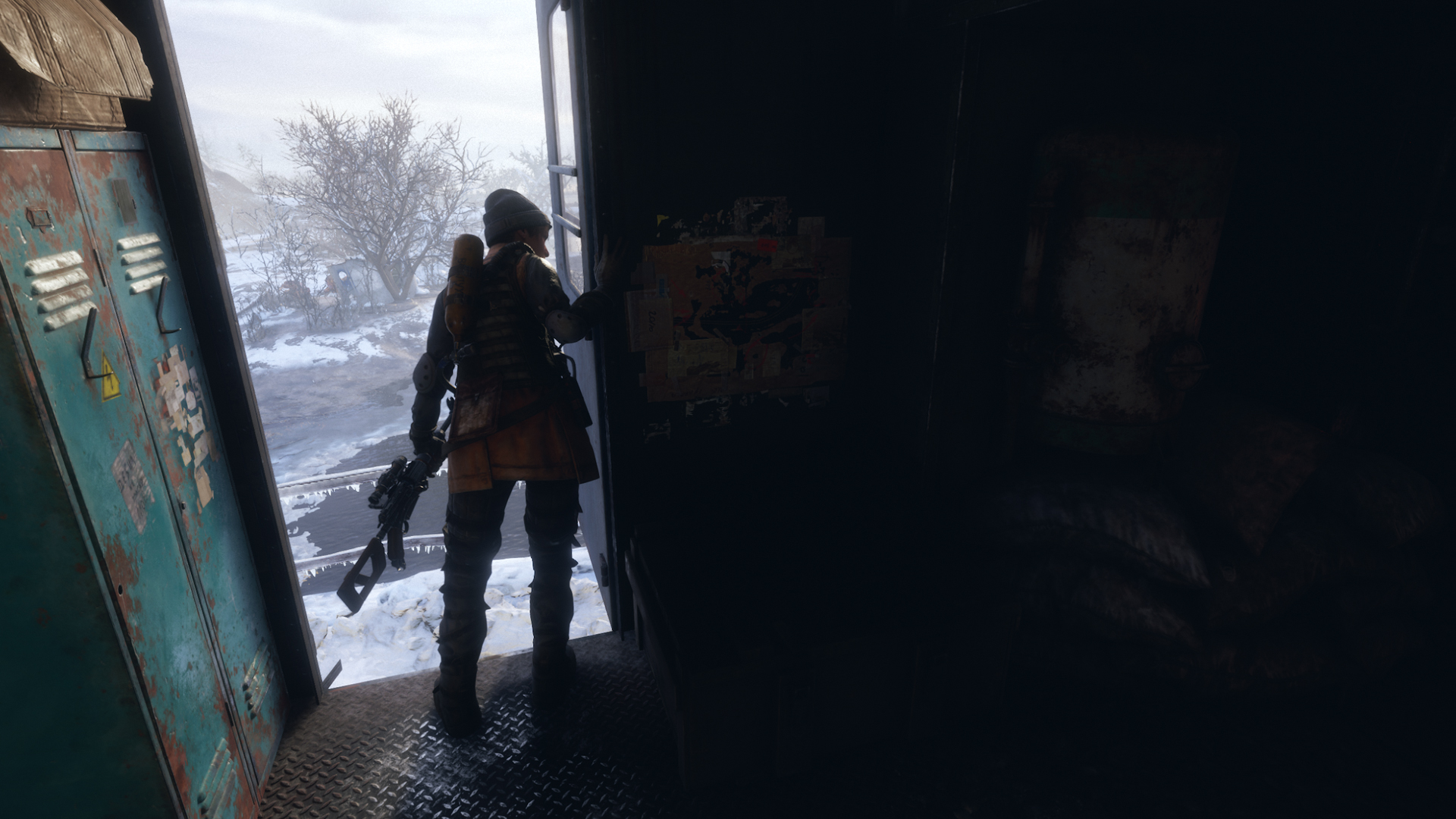What can we learn from Metro Exodus when looking towards graphics and performance on Xbox Series X and PS5?
Is using in-house tech in 2019 an asset or a problem for studios already feeling the burn of AAA development?

Metro Exodus shares a distinctive look and feel with its predecessors. Much of that can be attributed to 4A’s proprietary technology, appropriately titled 4A Engine and based in C++. Its visual benefits are abundant: in addition to arguably the highest visual fidelity levels in an FPS to date, it takes advantage of Nvidia’s new RTX features: deep learning super-sampling (DLSS) and realtime ray-tracing. It’s the first title to do so, and this agility must be seen through envious eyes by other studios granted their engines by a third-party licence.
With Sony's PS5 and Microsoft's Xbox One Series X on the near horizon, it certainly won't be the last game to embrace the emerging technology. How development studios plan on leveraging realtime ray-tracing , weighing its introduction against the other pressures of modern production, is now the most visible battleground of the next generation.
Engine evolution

The ray-traced reflections in Exodus’ mournful, mutant-filled waters are certainly striking, producing levels of detail that simply wasn’t there in reflective surfaces before the advent of this tech. DLSS, designed to aid performance using deep-learning algorithms, has a less pronounced effect given the game’s inconsistent performance on even the most powerful consumer card currently in existence. It’s at least a start, though, which 4A and its contemporaries can learn from and implement with more discernible results in future.

This feature first appeared in Edge Magazine. If you want more like it every month, delivered straight to your doorstop or your inbox, why not subscribe to Edge here.
If both the Jekyll and Hyde of Exodus’ performance and fidelity can be chalked up to its engine, at least some of its more esoteric mechanical features stem from 4A Engine too. The apparent necessity of implementing a QTE to perform contextual movements such as climbing a ladder, for example, smacks of an engine with less refinement in player movement than Unreal or Unity. The same criticism might be levelled at the inherent clunkiness of Artyom’s running animation, head-bobbing, and jumping. Veterans of 4A’s previous Metro offerings will recognise the sensation of dragging a tumble dryer across the wastelands immediately.
Still, it feels mean-spirited to pick apart every rough edge without also celebrating the existence of a game engine made in-house. Twenty years ago the landscape was filled with similarly ambitious ventures, games built from the engine up to accommodate specific visions and groundbreaking features. Would the Thief or System Shock games enjoy a soft spot in the collective consciousness without the Dark Engine’s distinctive look, feel and AI? And what would the industry look like without GoldSrc, Valve’s reworking of the Quake engine? Would modders still have laid the foundation for franchises such as Counter-Strike? The HPL engine has birthed nearly every big name in horror games over the past decade, and the very mention of Black Isle’s Infinity Engine brings a nostalgic tear to many an RPG fan’s eye even in 2019. So much so that spiritual successor Pillars of Eternity is now two games deep, mimicking the tech limitations of the engine, and the era.

"Before Unreal and Unity became quietly ubiquitous, these bespoke engines made for bespoke experiences"
Before Unreal and Unity became quietly ubiquitous, these bespoke engines made for bespoke experiences. Like 4A, their developers accepted higher overheads and a bigger risk of tech issues in exchange for a toolset tailor-made to create their vision. In this case, there’s a lineage of creators who sought a very particular vision: one of post-nuclear eastern Europe, one made in eastern Europe. The first iteration of 4A Engine came about as a result of several GSC Game World developers leaving the studio before the release of STALKER: Shadow Of Chernobyl to make their own game. Like STALKER, Metro 2033 required spectacular lighting effects created by anomalies and large outdoor spaces populated by ruined skyscrapers and urban decay. Unlike GSC’s game, it also needed to articulate details in tight interior spaces and choreograph grand set-pieces.
Over three subsequent games (including a redux), 4A Engine raised the bar for overall fidelity without really shedding that feeling of guiding a household appliance through tense shooting set-pieces. So it goes with Metro Exodus, a game that delivers on its promise of atmosphere, hardcore combat and exploration but can’t find finesse in the fundamentals.
Weekly digests, tales from the communities you love, and more
With the next-generation on the near horizon, Metro Exodus can – and should – serve as a cautionary tale. A small window into the advancements and trade-offs we should expect to see as developers begin to grapple with the advent and introduction of exciting, resource-intensive new technology. Can the industry rise to meet the challenge? Surely, only time will tell on that front.
Subscribe to Edge magazine in print and digital to get the inside line on the new generation of consoles including PS5 and Xbox One Series X
Edge magazine was launched in 1993 with a mission to dig deep into the inner workings of the international videogame industry, quickly building a reputation for next-level analysis, features, interviews and reviews that holds fast nearly 30 years on.



